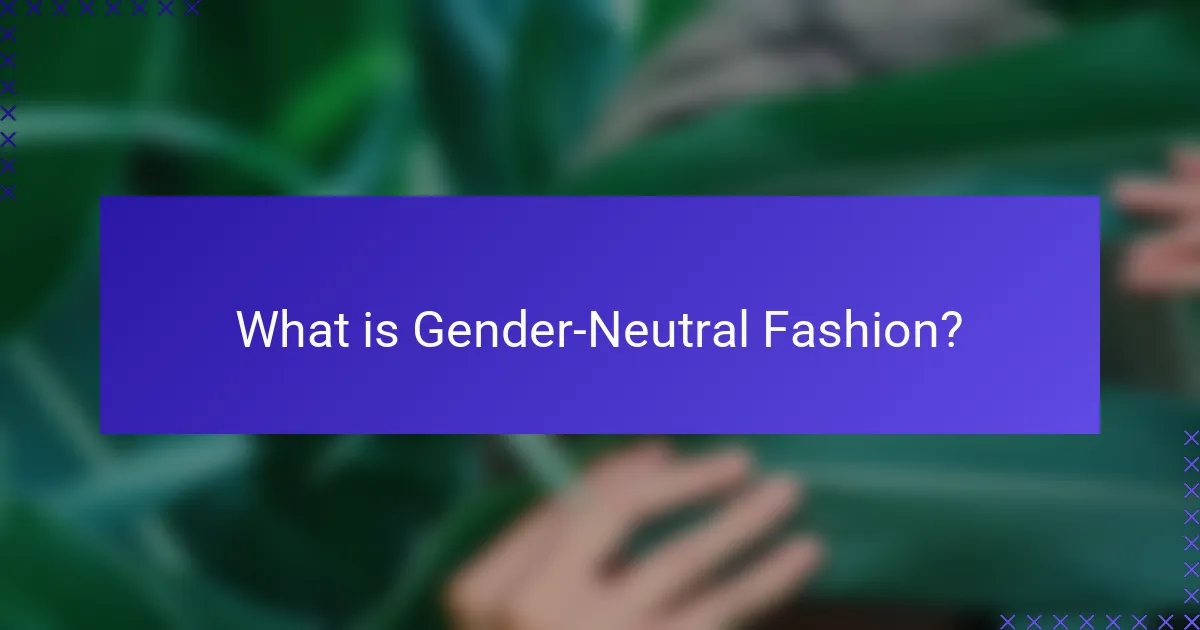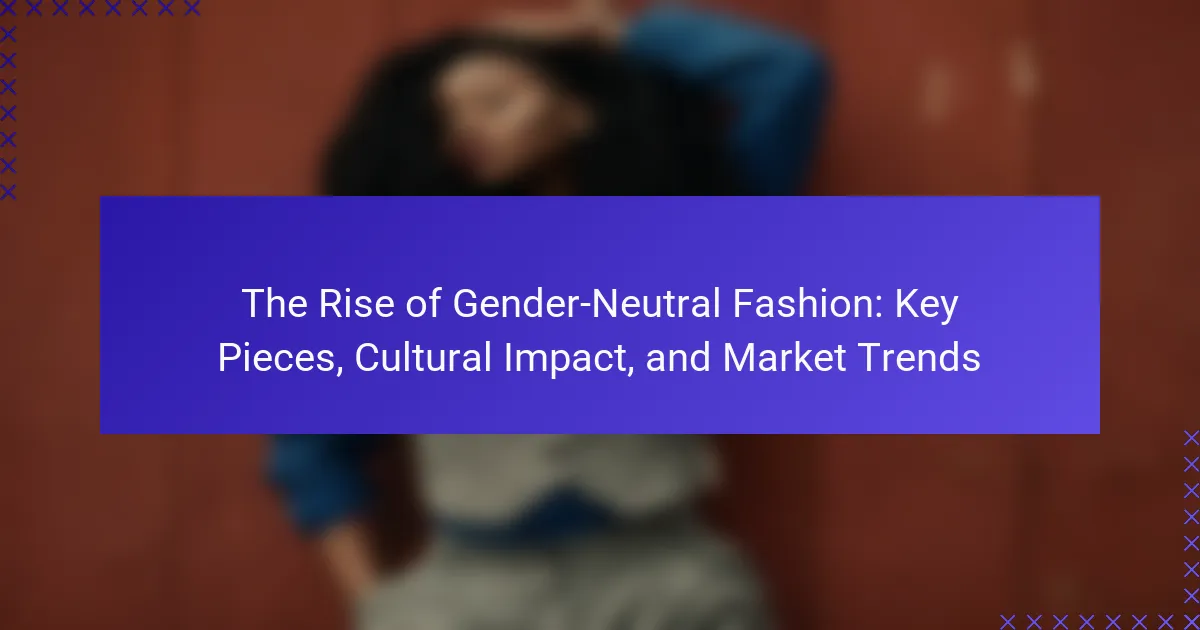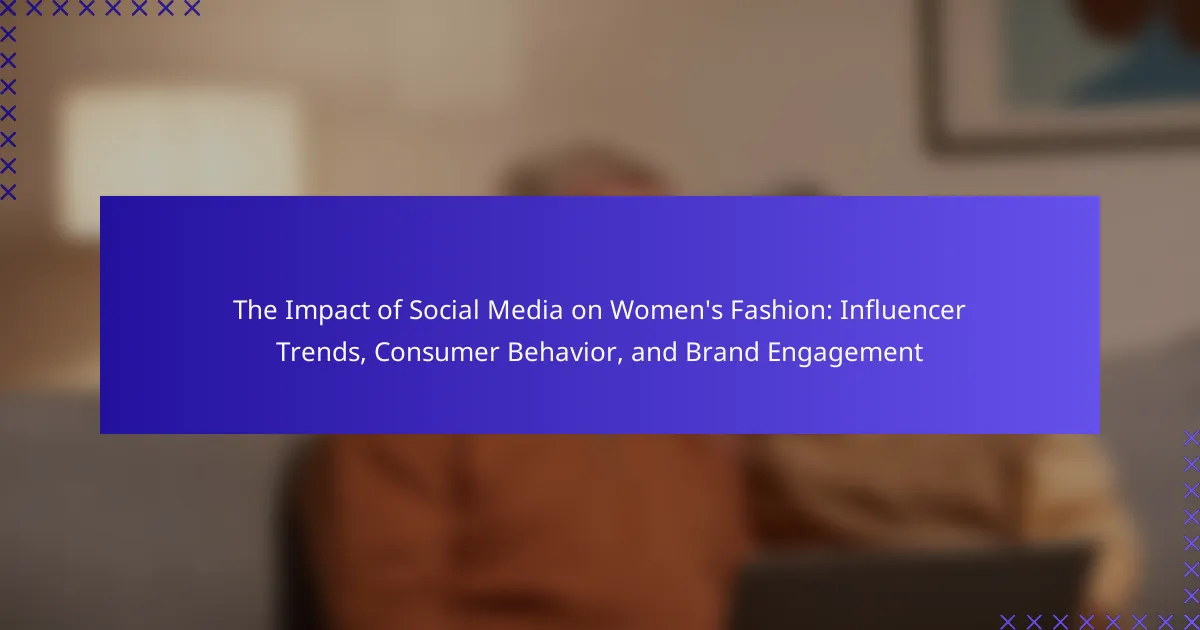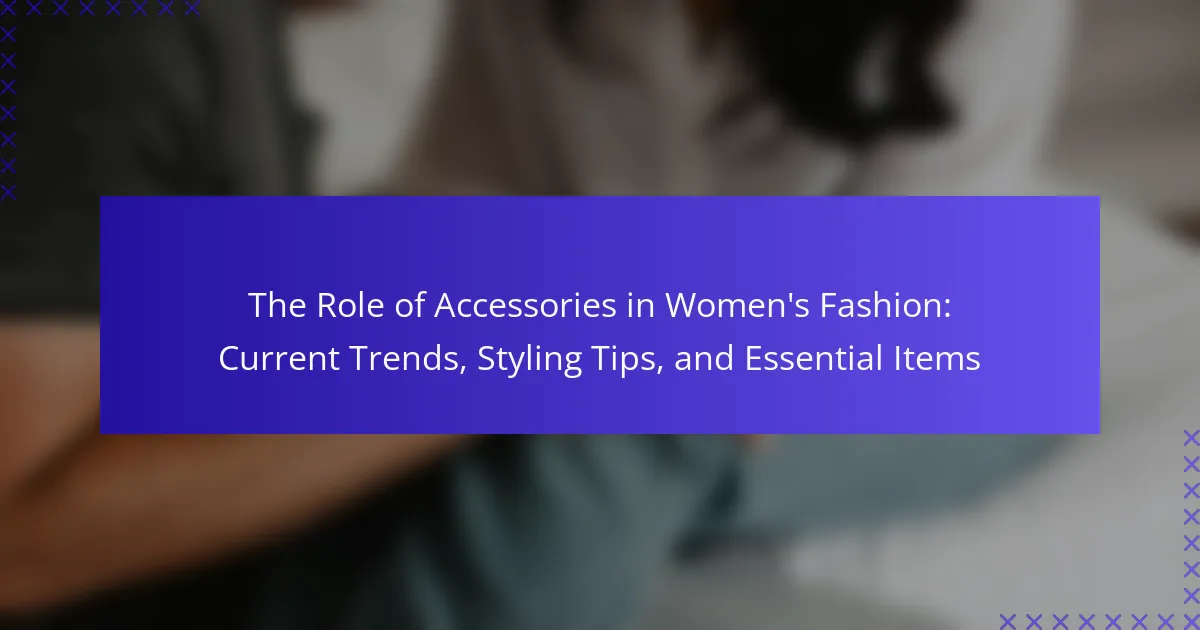Gender-neutral fashion encompasses clothing that is designed without gender-specific labels or styles, promoting inclusivity and self-expression. This fashion trend features unisex silhouettes, neutral colors, and versatile designs, reflecting a shift towards gender equality. Notable brands like Telfar and Rad Hourani are at the forefront of this movement, prioritizing comfort and personal identity. The article explores the rise of gender-neutral fashion, highlighting key pieces, cultural impacts, and market trends, including the significant consumer appreciation for brands that support gender inclusivity.

What is Gender-Neutral Fashion?
Gender-neutral fashion refers to clothing designed to be free from gender-specific labels and styles. This fashion approach focuses on inclusivity and allows individuals to express themselves without conforming to traditional gender norms. It often features unisex silhouettes, neutral colors, and versatile designs. The rise of gender-neutral fashion aligns with broader societal shifts towards gender equality and self-expression. Brands like Telfar and Rad Hourani have popularized this trend, emphasizing comfort and personal identity over gender. Studies show that 62% of consumers appreciate brands that promote gender inclusivity, reflecting a growing market demand for such styles.
How did Gender-Neutral Fashion emerge as a trend?
Gender-neutral fashion emerged as a trend in response to evolving societal norms regarding gender identity. The late 20th century saw increased discussions around gender fluidity. Designers began to challenge traditional gender norms in clothing. This shift was influenced by movements advocating for [censured] rights and inclusivity. Brands like Rad Hourani and Telfar introduced unisex collections that blurred gender lines. In 2015, the term “gender-neutral” gained more visibility in fashion. Fashion weeks began featuring gender-neutral runway shows, showcasing diverse styles. The trend represents a broader cultural acceptance of non-binary identities in society.
What historical events influenced the rise of Gender-Neutral Fashion?
The rise of gender-neutral fashion was influenced by several historical events. The feminist movement of the 1960s challenged traditional gender roles. This movement encouraged women to adopt more masculine styles, promoting androgyny in fashion. The 1980s saw the emergence of unisex clothing lines, reflecting changing societal norms. Additionally, the [censured] rights movement brought visibility to non-binary identities. This visibility further blurred gender lines in fashion. The 1990s grunge movement popularized oversized silhouettes, appealing to a broader audience. In recent years, designers have increasingly embraced inclusivity, showcasing gender-neutral collections on runways. These historical events collectively shaped the evolution of gender-neutral fashion.
How do cultural shifts contribute to the popularity of Gender-Neutral Fashion?
Cultural shifts significantly contribute to the popularity of gender-neutral fashion. Increased acceptance of diverse gender identities has led to a demand for clothing that transcends traditional gender norms. Social movements advocating for equality promote inclusivity in fashion. The rise of digital platforms allows for broader visibility of gender-neutral styles. Celebrities and influencers embracing gender-neutral fashion further amplify its appeal. Studies show that consumers increasingly favor brands that align with progressive values. As a result, the market for gender-neutral fashion continues to expand, reflecting changing societal attitudes.
What are the key characteristics of Gender-Neutral Fashion?
Gender-neutral fashion is characterized by its inclusivity and lack of traditional gender distinctions. It features silhouettes that are not confined to male or female body types. Fabrics used are often soft and comfortable, promoting wearability for all. Color palettes tend to include neutral tones, avoiding stereotypical gender colors. The designs often emphasize minimalism, focusing on functionality over embellishment. Gender-neutral fashion encourages self-expression without societal constraints. Brands like Telfar and Rad Hourani exemplify this trend with their unisex collections. This movement reflects a broader cultural shift towards acceptance and diversity in personal identity.
What types of clothing are considered gender-neutral?
Gender-neutral clothing includes items that do not conform to traditional gender norms. Common types are oversized t-shirts, hoodies, and sweatpants. These pieces are designed for comfort and versatility. Additionally, unisex jeans and shorts are widely accepted as gender-neutral. Button-up shirts in relaxed fits also fall into this category. Many brands now offer gender-neutral collections. This shift reflects changing societal attitudes towards gender identity. The fashion industry increasingly embraces inclusivity in clothing design.
How does the design of gender-neutral clothing differ from traditional styles?
Gender-neutral clothing is designed to be inclusive, avoiding traditional gender-specific cuts and styles. It often features relaxed fits that prioritize comfort over form-fitting designs. Color palettes in gender-neutral fashion tend to be more muted or varied, moving beyond the typical blue and pink dichotomy. Fabrics used are often unisex, such as cotton and jersey, which appeal to a broader audience.
Traditional styles often adhere to societal norms, with distinct silhouettes for men and women. Gender-neutral designs emphasize versatility, allowing for mixed layering and adaptable outfits. This approach has been supported by a growing market trend, with brands increasingly recognizing the demand for inclusivity. Research indicates that 56% of consumers are interested in brands offering gender-neutral options, highlighting a shift in consumer preferences.
What role does Gender-Neutral Fashion play in society?
Gender-neutral fashion promotes inclusivity and challenges traditional gender norms. It allows individuals to express their identity without the constraints of gendered clothing. This fashion movement fosters acceptance and diversity in personal style. According to a study by the Council of Fashion Designers of America, 60% of consumers prefer brands that offer gender-neutral options. Gender-neutral fashion also encourages brands to innovate and expand their product lines. This shift reflects broader societal changes towards equality and representation. By normalizing non-binary styles, gender-neutral fashion supports the [censured] community. Overall, it plays a crucial role in shaping a more inclusive society.
How does Gender-Neutral Fashion challenge traditional gender norms?
Gender-neutral fashion challenges traditional gender norms by promoting clothing that is not restricted to conventional male or female styles. It encourages individuals to express their identity beyond binary classifications. This movement subverts the idea that certain colors, cuts, or fabrics belong exclusively to one gender. For example, designers like Rad Hourani and Telfar have created unisex collections that appeal to a diverse audience. The popularity of gender-neutral brands reflects a societal shift towards inclusivity. Surveys indicate that a significant percentage of consumers prefer brands that embrace gender fluidity. This fashion trend not only influences personal style but also impacts broader cultural perceptions of gender.
What impact does Gender-Neutral Fashion have on self-expression?
Gender-neutral fashion enhances self-expression by allowing individuals to wear clothing that reflects their identity without gender constraints. This approach promotes inclusivity and diversity in personal style. It encourages creativity, as people can mix and match pieces traditionally associated with different genders. Research indicates that 70% of consumers feel more empowered when they dress in a gender-neutral manner. This empowerment leads to increased confidence and authenticity in self-presentation. As a result, gender-neutral fashion contributes to a broader acceptance of varied expressions of identity.
How is the market for Gender-Neutral Fashion evolving?
The market for gender-neutral fashion is rapidly evolving. Increasing consumer demand for inclusivity drives this growth. Major brands are expanding their collections to include gender-neutral options. According to a report by McKinsey & Company, the global market for gender-neutral fashion is projected to grow significantly by 2025. Social media influences trends, with influencers promoting gender-fluid styles. Retailers are adopting more unisex designs to cater to diverse audiences. The rise of sustainability also impacts this market, as consumers prefer versatile clothing. Overall, the evolution reflects broader cultural shifts towards acceptance and diversity in fashion.
What are the current market trends in Gender-Neutral Fashion?
Current market trends in gender-neutral fashion include a significant rise in demand for unisex clothing. According to a report by Allied Market Research, the global unisex apparel market is projected to reach $400 billion by 2025. Retailers are increasingly offering collections that cater to all genders, promoting inclusivity. Sustainable practices are also gaining traction, with brands focusing on eco-friendly materials. Social media influencers are driving visibility and acceptance of gender-neutral styles. Additionally, collaborations between established brands and gender-neutral designers are becoming more common. These trends reflect a broader cultural shift towards acceptance and diversity in fashion.
How are brands adapting to the demand for Gender-Neutral Fashion?
Brands are adapting to the demand for gender-neutral fashion by creating inclusive collections. They are designing clothing that is not specifically targeted at any gender. This approach expands the variety of styles available to consumers. Many brands now feature unisex sizing and cuts. This allows for a wider range of body types to be accommodated. Additionally, brands are using marketing strategies that emphasize diversity and inclusivity. They are collaborating with gender-neutral influencers to reach broader audiences. According to a report by McKinsey, the gender-neutral fashion market is projected to grow significantly. This indicates a strong consumer interest in such products. Brands are responding to this trend with innovative designs and targeted campaigns.
What challenges does the Gender-Neutral Fashion industry face?
The Gender-Neutral Fashion industry faces several challenges. One major challenge is market acceptance. Many consumers still hold traditional views on gender and fashion. This limits the potential customer base for gender-neutral brands. Additionally, there is a lack of standardized sizing across gender-neutral options. This inconsistency can discourage shoppers from purchasing.
Another challenge is the representation within the industry. Many brands still prioritize binary gender marketing. This can alienate non-binary and gender-fluid individuals. Furthermore, production costs can be higher for gender-neutral lines. This is due to the need for diverse designs and inclusive marketing strategies.
Lastly, the industry struggles with visibility in mainstream fashion. Many gender-neutral brands remain underrepresented in major retail spaces. This limits their reach and growth potential. Overall, these challenges hinder the progress and acceptance of gender-neutral fashion in the broader market.
What are the common misconceptions about Gender-Neutral Fashion?
Common misconceptions about gender-neutral fashion include the belief that it lacks style or sophistication. Many think gender-neutral clothing is merely oversized or baggy. This is incorrect; many brands focus on tailored fits and stylish designs. Another misconception is that gender-neutral fashion is only for non-binary individuals. In reality, it appeals to a broad audience seeking comfort and inclusivity. People often assume that gender-neutral fashion is limited to specific colors, primarily neutrals. However, many designers incorporate vibrant colors and patterns. Lastly, some believe that gender-neutral fashion is a recent trend. In fact, it has historical roots in various cultures and movements.
How do supply chain issues affect the production of gender-neutral clothing?
Supply chain issues significantly hinder the production of gender-neutral clothing. Delays in sourcing materials can lead to shortages of fabric and components. This disrupts manufacturing schedules and increases costs. Fluctuations in shipping can delay product launches and limit availability. Additionally, labor shortages can affect production capacity. According to a 2021 report by McKinsey, supply chain disruptions have increased lead times by up to 30%. These challenges can ultimately impact the market’s response to gender-neutral fashion trends.
What are the future prospects for Gender-Neutral Fashion?
The future prospects for gender-neutral fashion are promising and expanding. The market for gender-neutral clothing is projected to grow significantly, with a compound annual growth rate of over 6% from 2021 to 2026. This growth is driven by increasing consumer acceptance and demand for inclusivity in fashion. Major fashion brands are increasingly adopting gender-neutral lines, reflecting changing societal norms. Additionally, younger generations prioritize brands that promote diversity and inclusivity. The rise of social media has amplified voices advocating for gender-neutral styles, further influencing trends. Fashion weeks and events are now showcasing gender-neutral collections, indicating a shift in industry standards. Retailers are also adjusting their marketing strategies to appeal to a broader audience. Overall, gender-neutral fashion is set to become a mainstream choice, reshaping the fashion landscape.
How might consumer preferences shape the future of Gender-Neutral Fashion?
Consumer preferences will significantly shape the future of gender-neutral fashion. As more individuals seek inclusivity in clothing, brands will adapt their offerings. Surveys indicate that 60% of consumers prefer brands that promote gender-neutral options. This demand will encourage designers to create versatile pieces that appeal to all genders. Retailers will likely expand their collections to include unisex styles. Additionally, social media trends are influencing consumer choices toward more fluid fashion. As awareness grows, brands that embrace gender-neutrality will gain a competitive edge. This shift aligns with broader societal movements advocating for equality and diversity in fashion.
What innovations could influence the development of Gender-Neutral Fashion?
Technological advancements in fabric production could significantly influence the development of gender-neutral fashion. Innovations such as 3D knitting allow for customizable designs that fit various body types. Sustainable materials like recycled fibers are increasingly sought after, appealing to eco-conscious consumers. Smart textiles that adapt to temperature and moisture can enhance comfort for all genders. Digital fashion platforms enable virtual try-ons, promoting inclusivity in style choices. Additionally, collaborations between brands and gender-diverse designers can broaden perspectives in fashion design. Research indicates that consumers are increasingly favoring brands that embrace inclusivity, with a 2021 study showing a 30% increase in sales for gender-neutral collections.
What practical tips can consumers consider when exploring Gender-Neutral Fashion?
Consumers exploring gender-neutral fashion should prioritize versatility in their clothing choices. Look for pieces that can be styled in multiple ways. Neutral colors and simple designs often work best for gender-neutral attire. Consider the fit; oversized or tailored options can suit various body types. Fabrics should be comfortable and breathable for everyday wear. Accessories can enhance a gender-neutral look; choose items like hats or bags that complement the outfit. Research brands that specialize in gender-neutral collections for a wider selection. Stay informed about trends in gender-neutral fashion through social media and fashion blogs.
The main entity of the article is gender-neutral fashion, which refers to clothing designed without gender-specific labels and styles, promoting inclusivity and self-expression. The article explores the emergence of this trend, influenced by historical events and cultural shifts towards gender equality. Key characteristics of gender-neutral fashion include unisex silhouettes, neutral colors, and versatile designs, which cater to a broad audience. Additionally, the article examines market trends, consumer preferences, and the challenges faced by the gender-neutral fashion industry, highlighting its growing significance in contemporary society.



